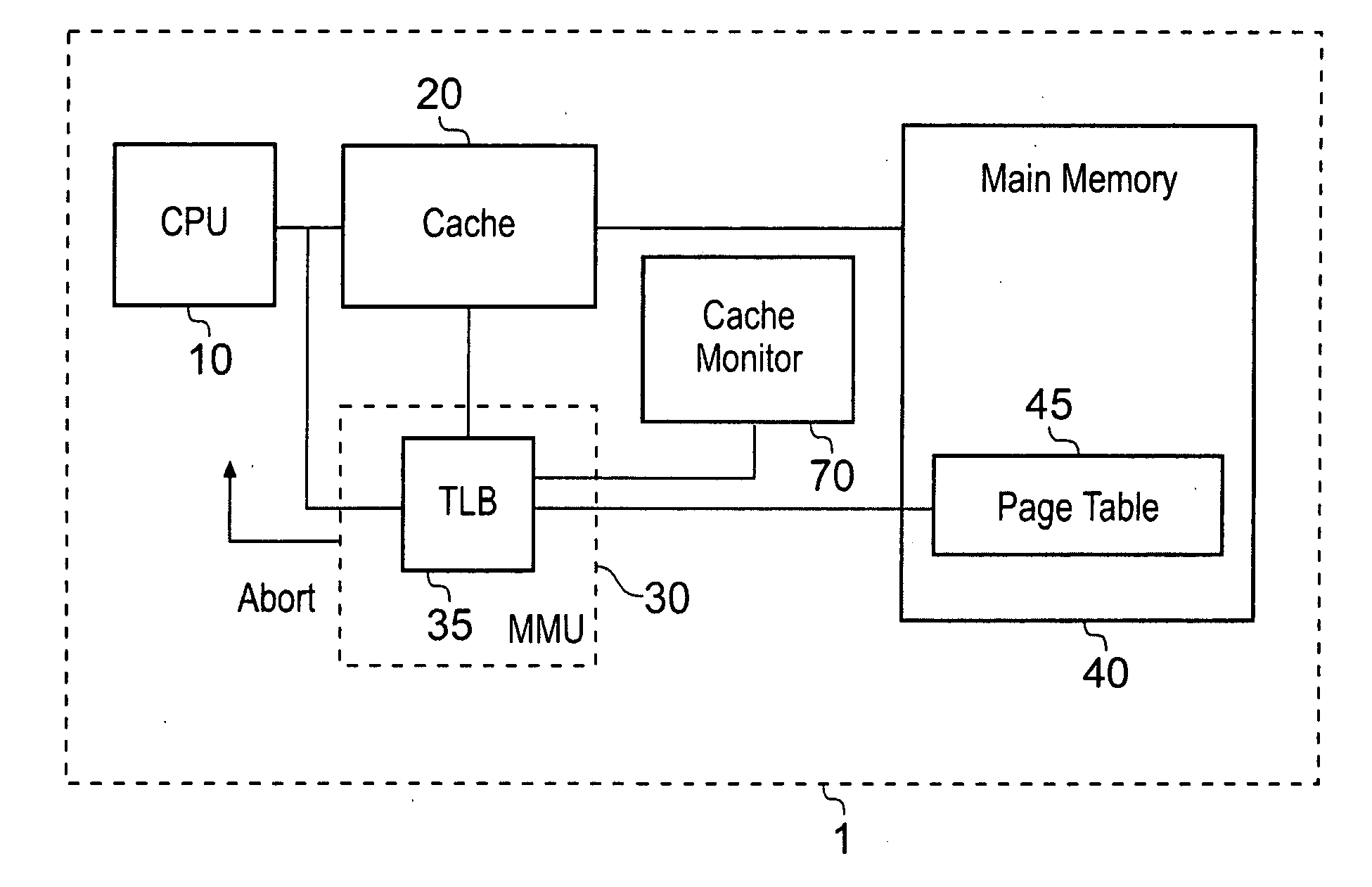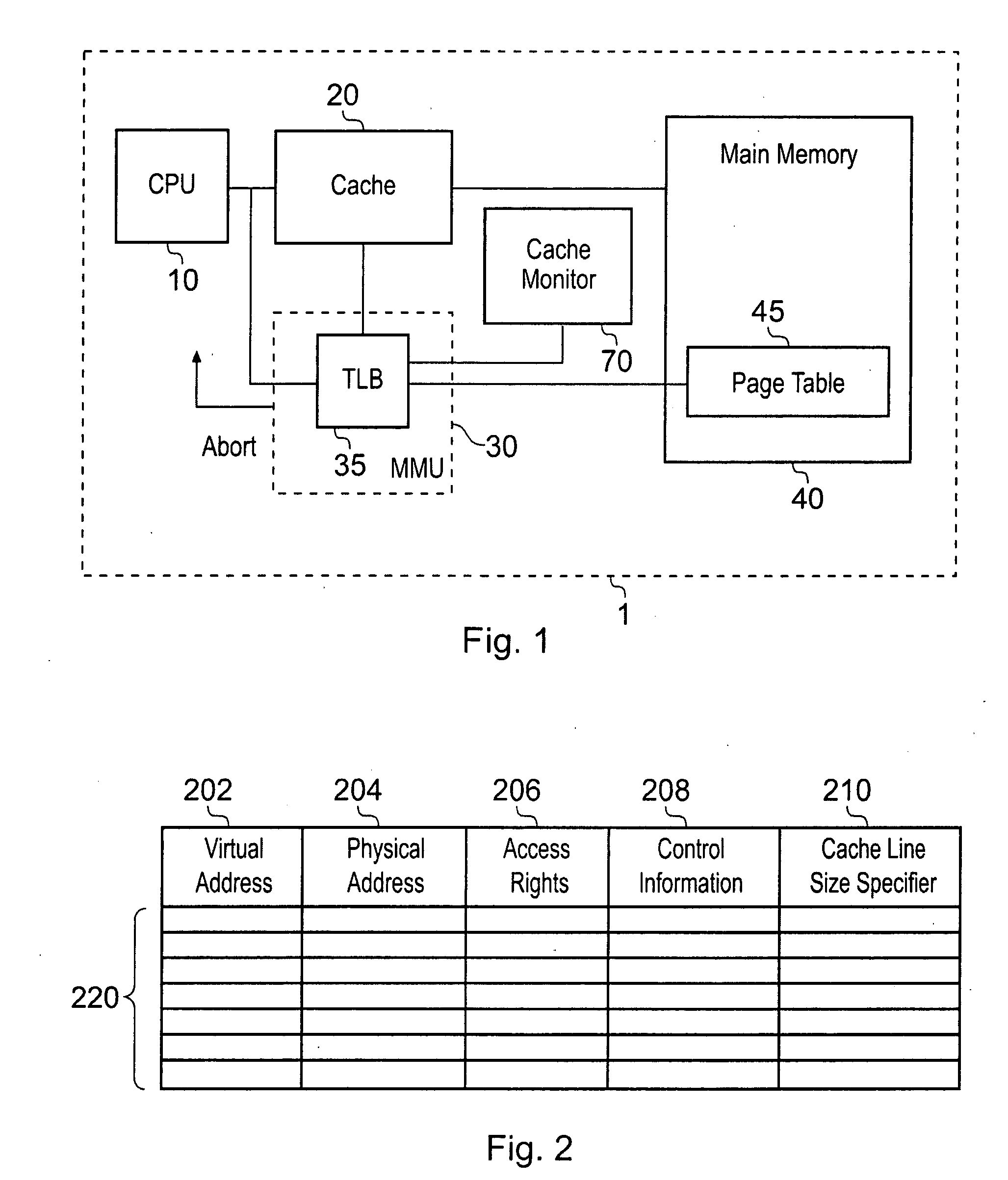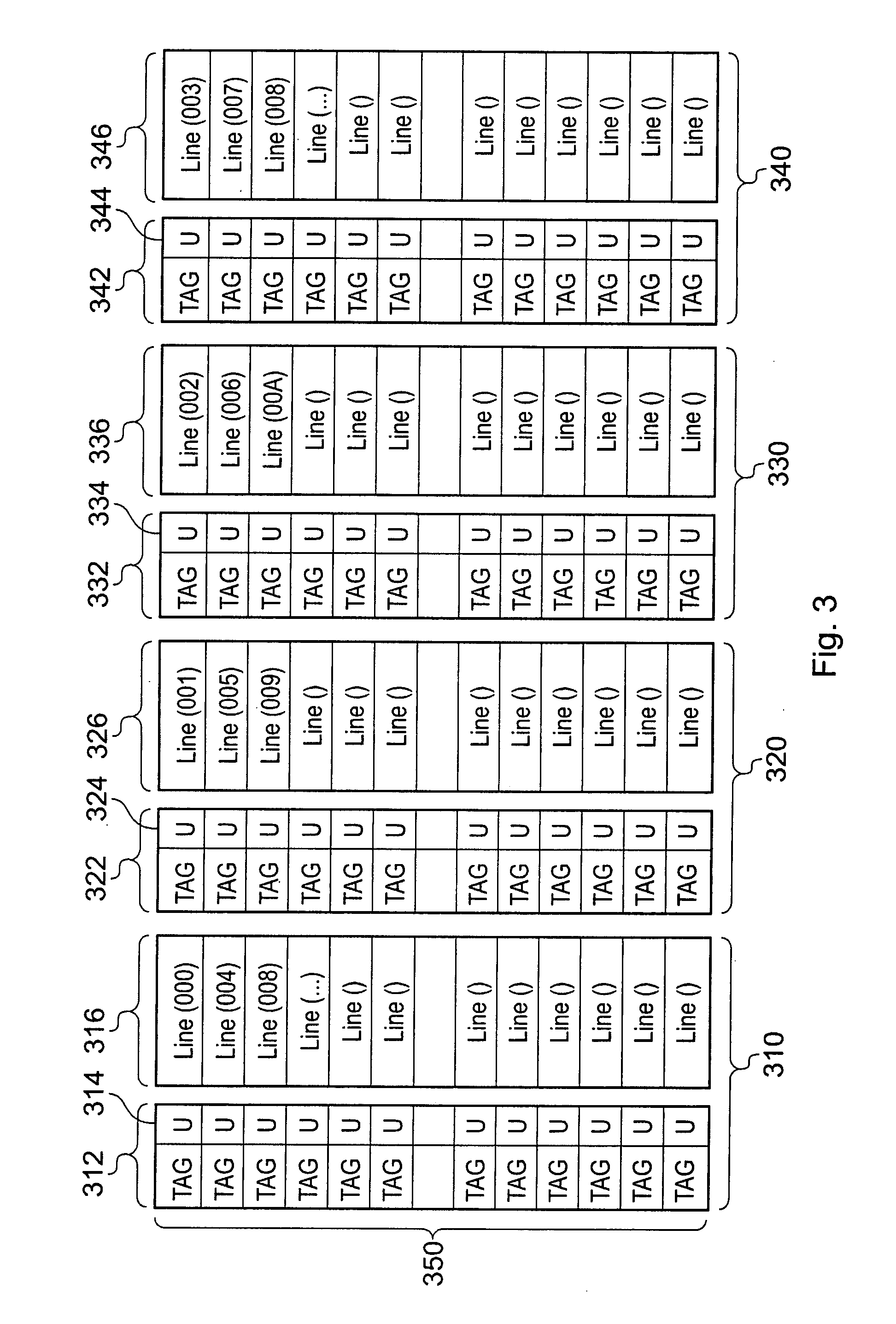Cache memory
- Summary
- Abstract
- Description
- Claims
- Application Information
AI Technical Summary
Benefits of technology
Problems solved by technology
Method used
Image
Examples
Embodiment Construction
[0041]In FIG. 1, a data processing apparatus 1 is illustrated and includes a central processing unit (CPU) 10, a cache memory 20, a memory management unit (MMU) 30, and a main memory 40. The cache memory 20 is arranged to store a copy of a subset of the data present in the main memory 40. Accesses to data stored in the cache memory 20 can be conducted much faster than accesses to data stored only in the main memory 30, leading to improvements in performance. The MMU 30 serves to assign properties to main memory accesses on a memory region basis and includes a transaction look-aside buffer (TLB) 35 which stores page table entries providing virtual to physical address mapping and access control permissions. In particular, while the cache memory 20 may be addressable using virtual addresses, the main memory 40 can only be addressed using physical addresses. Accordingly, virtual to physical address mapping is required to access data within the main memory 40 if it is not found to be pre...
PUM
 Login to View More
Login to View More Abstract
Description
Claims
Application Information
 Login to View More
Login to View More - R&D
- Intellectual Property
- Life Sciences
- Materials
- Tech Scout
- Unparalleled Data Quality
- Higher Quality Content
- 60% Fewer Hallucinations
Browse by: Latest US Patents, China's latest patents, Technical Efficacy Thesaurus, Application Domain, Technology Topic, Popular Technical Reports.
© 2025 PatSnap. All rights reserved.Legal|Privacy policy|Modern Slavery Act Transparency Statement|Sitemap|About US| Contact US: help@patsnap.com



